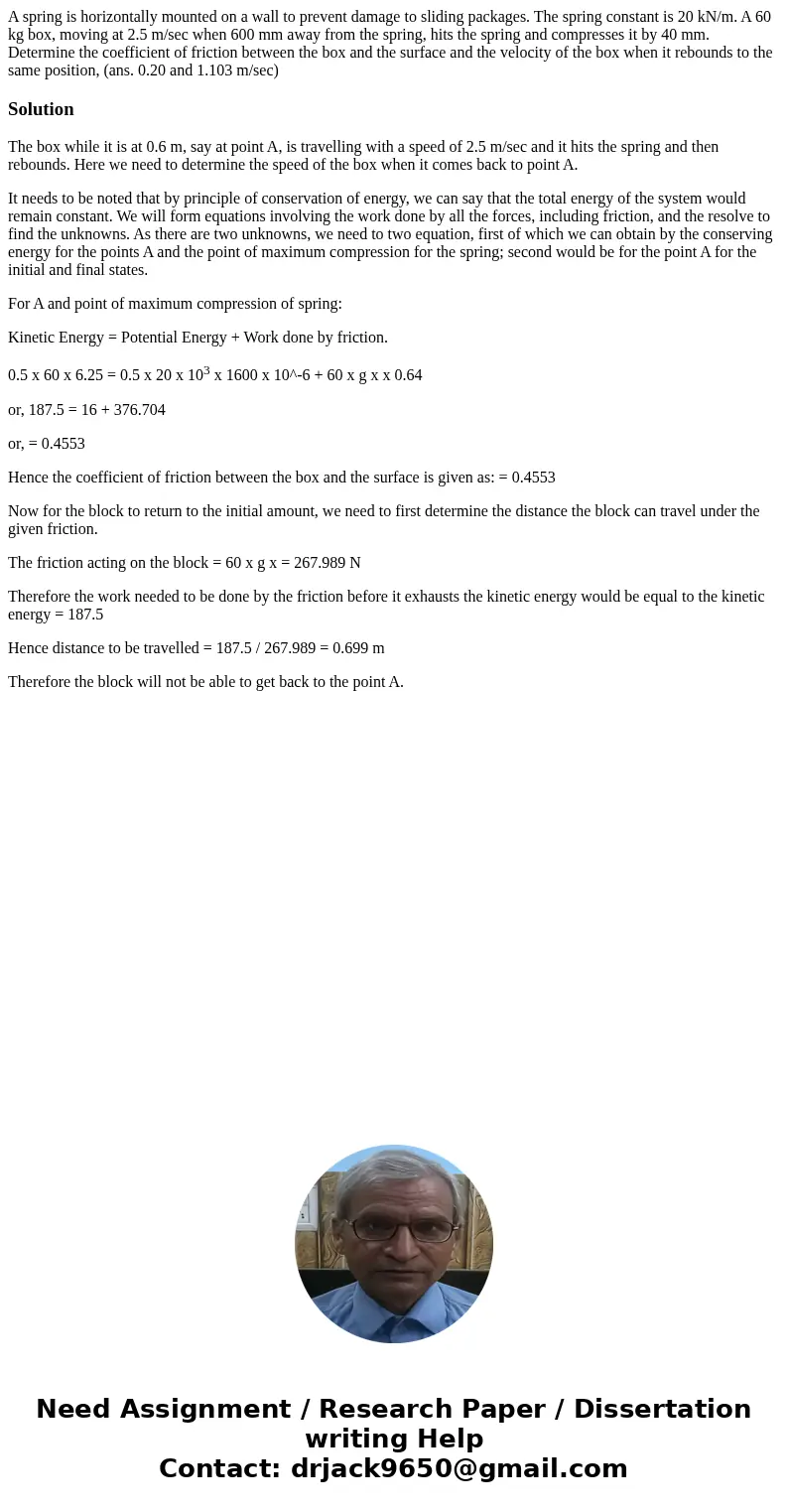A spring is horizontally mounted on a wall to prevent damage
Solution
The box while it is at 0.6 m, say at point A, is travelling with a speed of 2.5 m/sec and it hits the spring and then rebounds. Here we need to determine the speed of the box when it comes back to point A.
It needs to be noted that by principle of conservation of energy, we can say that the total energy of the system would remain constant. We will form equations involving the work done by all the forces, including friction, and the resolve to find the unknowns. As there are two unknowns, we need to two equation, first of which we can obtain by the conserving energy for the points A and the point of maximum compression for the spring; second would be for the point A for the initial and final states.
For A and point of maximum compression of spring:
Kinetic Energy = Potential Energy + Work done by friction.
0.5 x 60 x 6.25 = 0.5 x 20 x 103 x 1600 x 10^-6 + 60 x g x x 0.64
or, 187.5 = 16 + 376.704
or, = 0.4553
Hence the coefficient of friction between the box and the surface is given as: = 0.4553
Now for the block to return to the initial amount, we need to first determine the distance the block can travel under the given friction.
The friction acting on the block = 60 x g x = 267.989 N
Therefore the work needed to be done by the friction before it exhausts the kinetic energy would be equal to the kinetic energy = 187.5
Hence distance to be travelled = 187.5 / 267.989 = 0.699 m
Therefore the block will not be able to get back to the point A.

 Homework Sourse
Homework Sourse